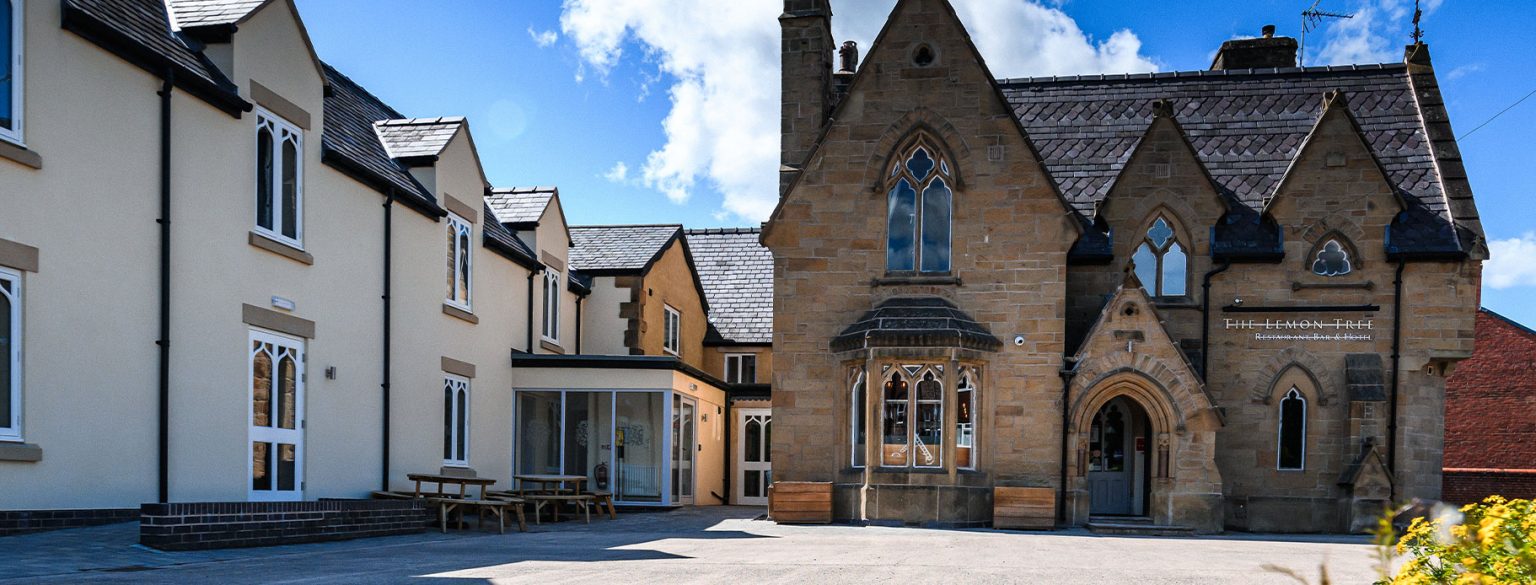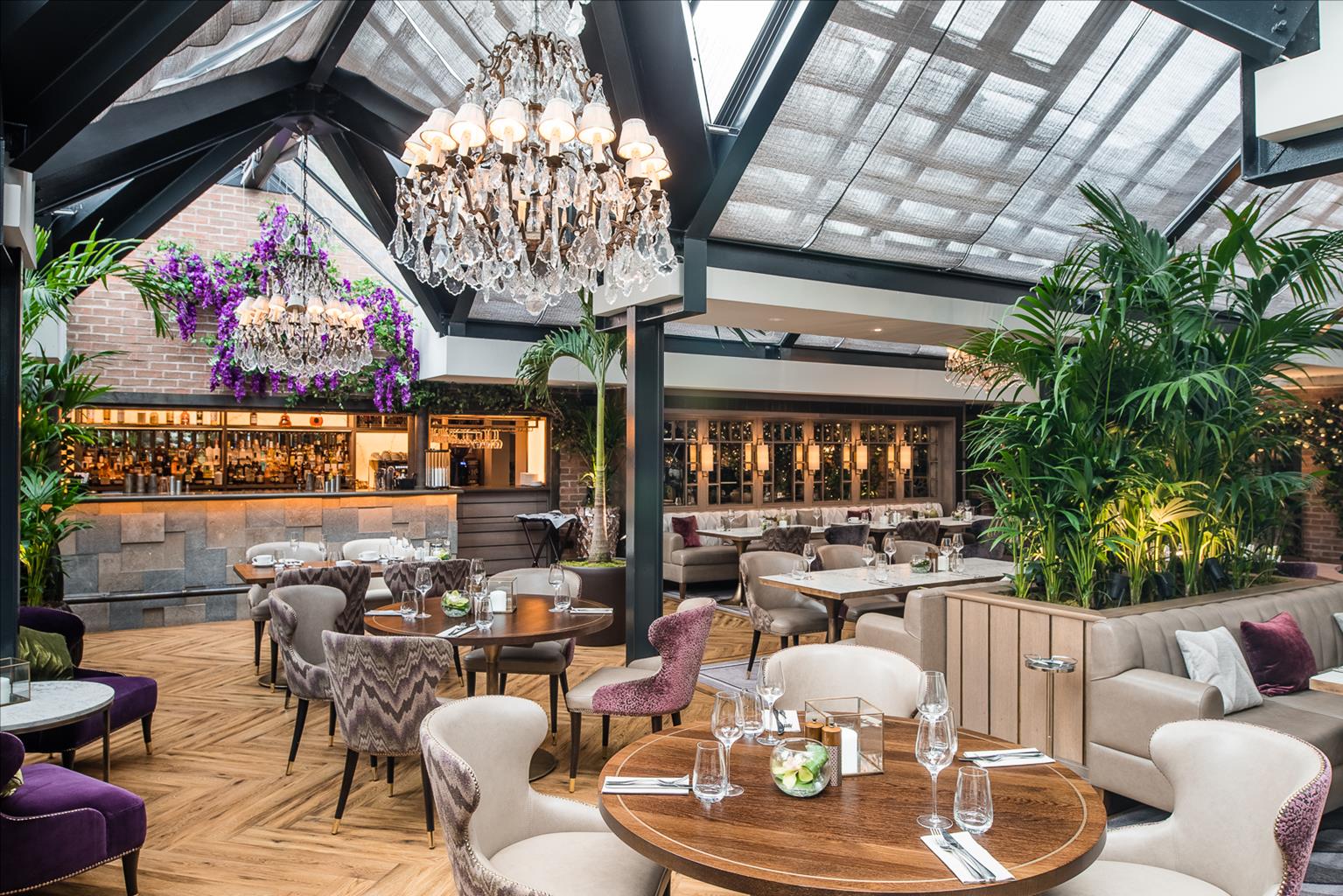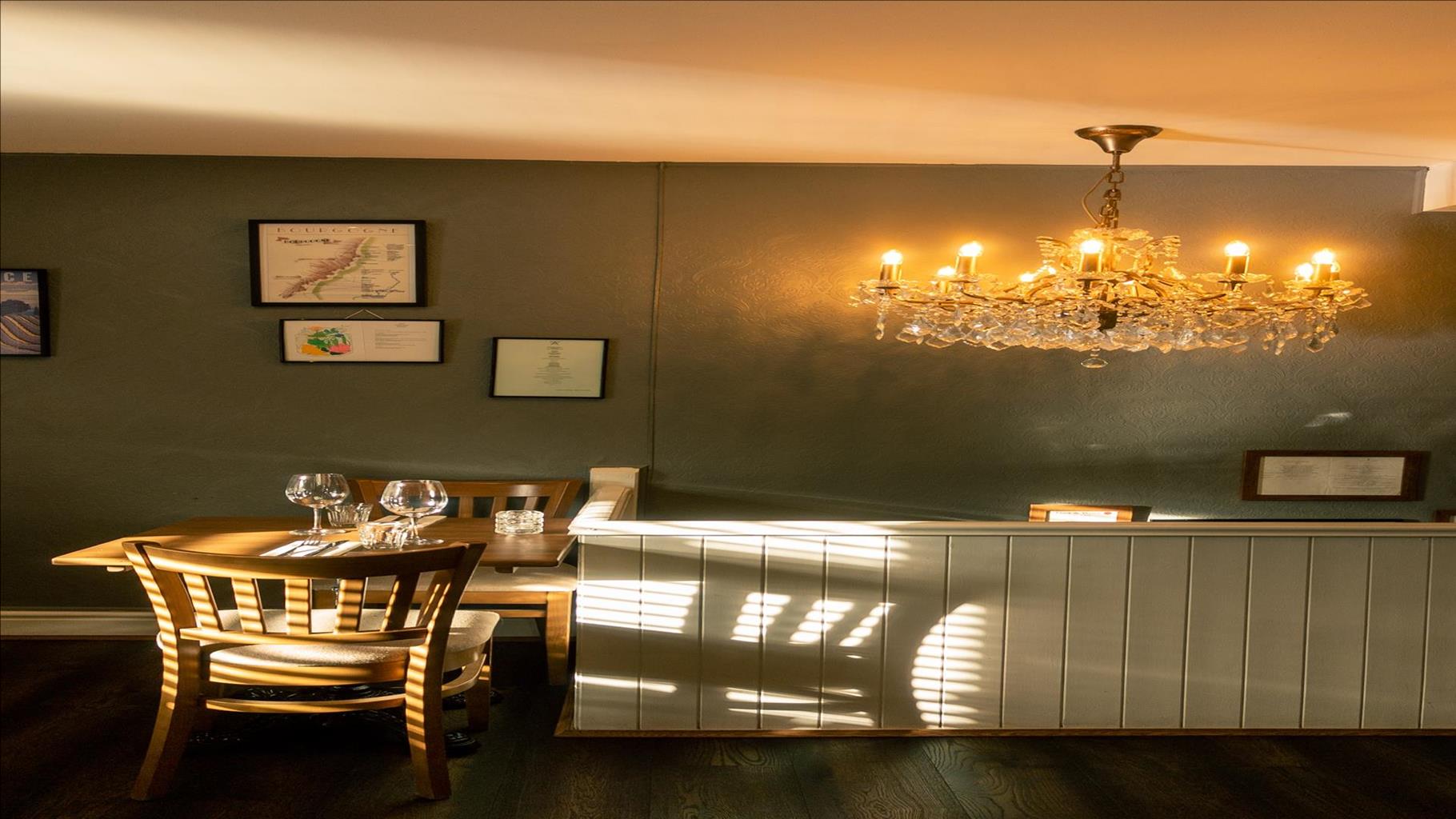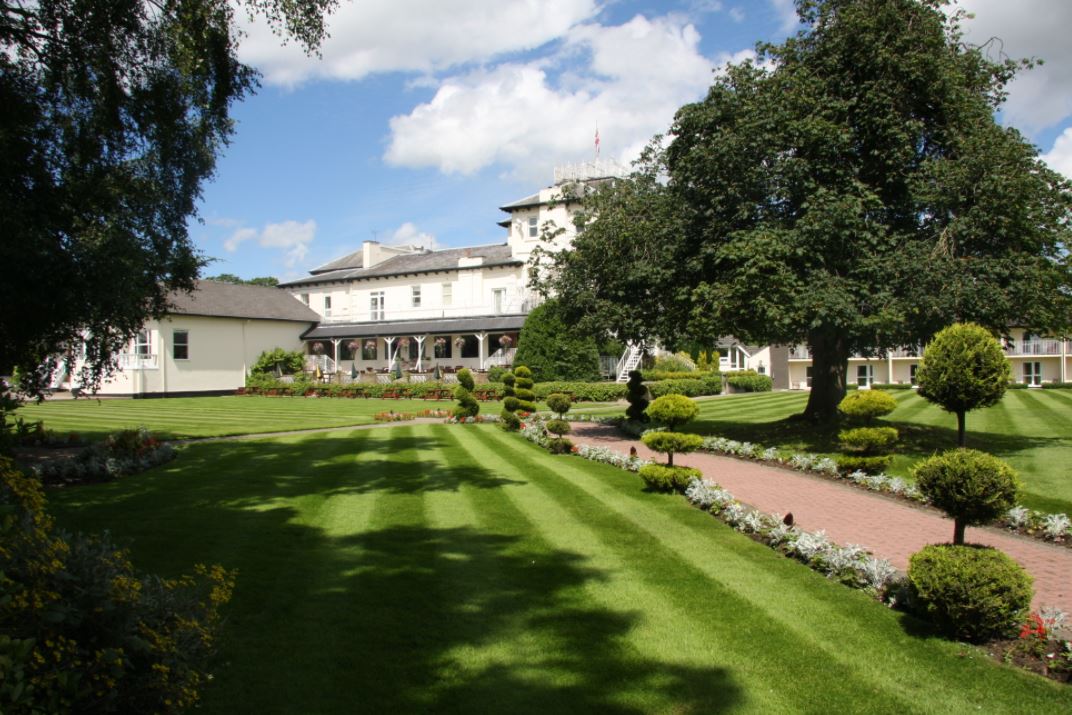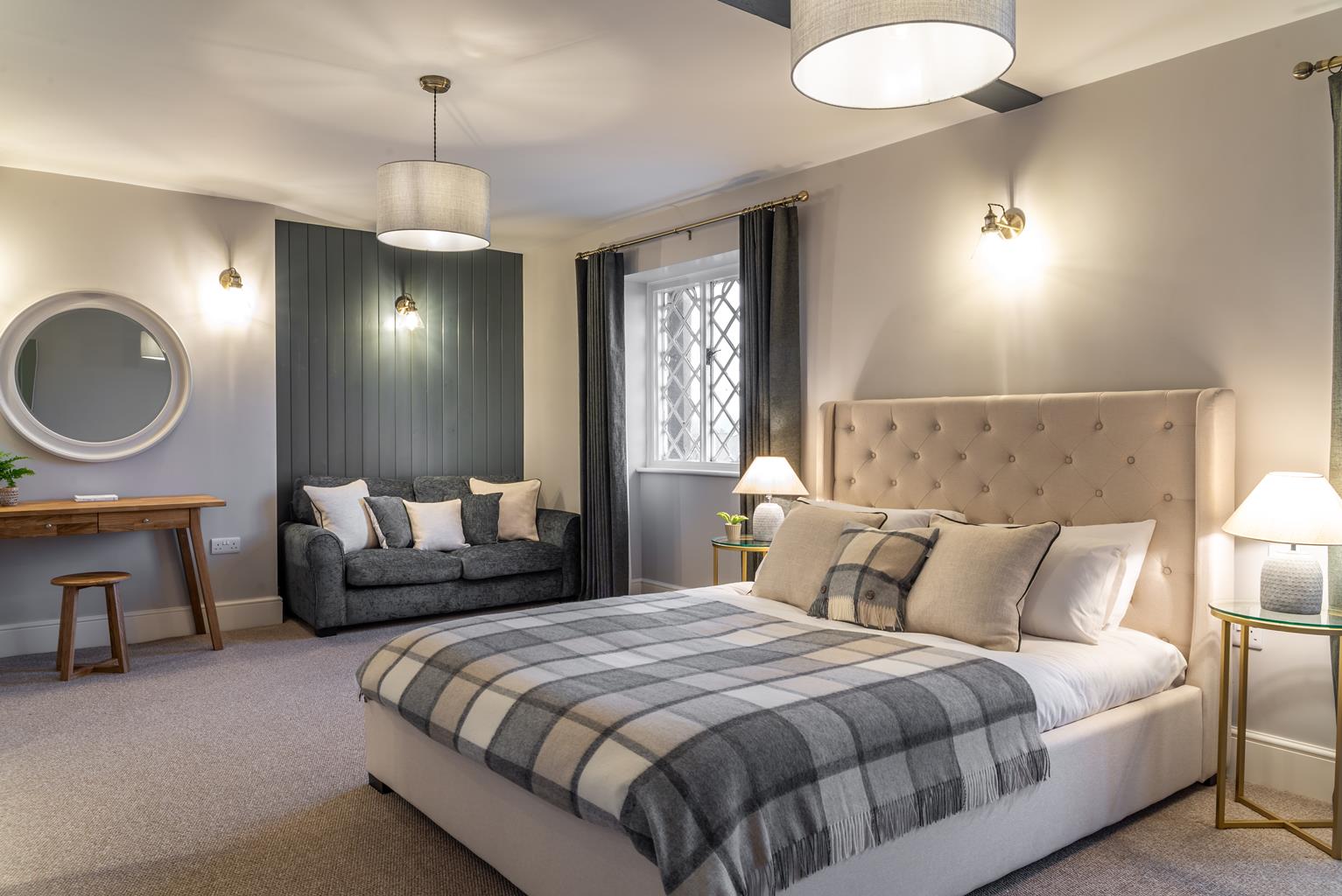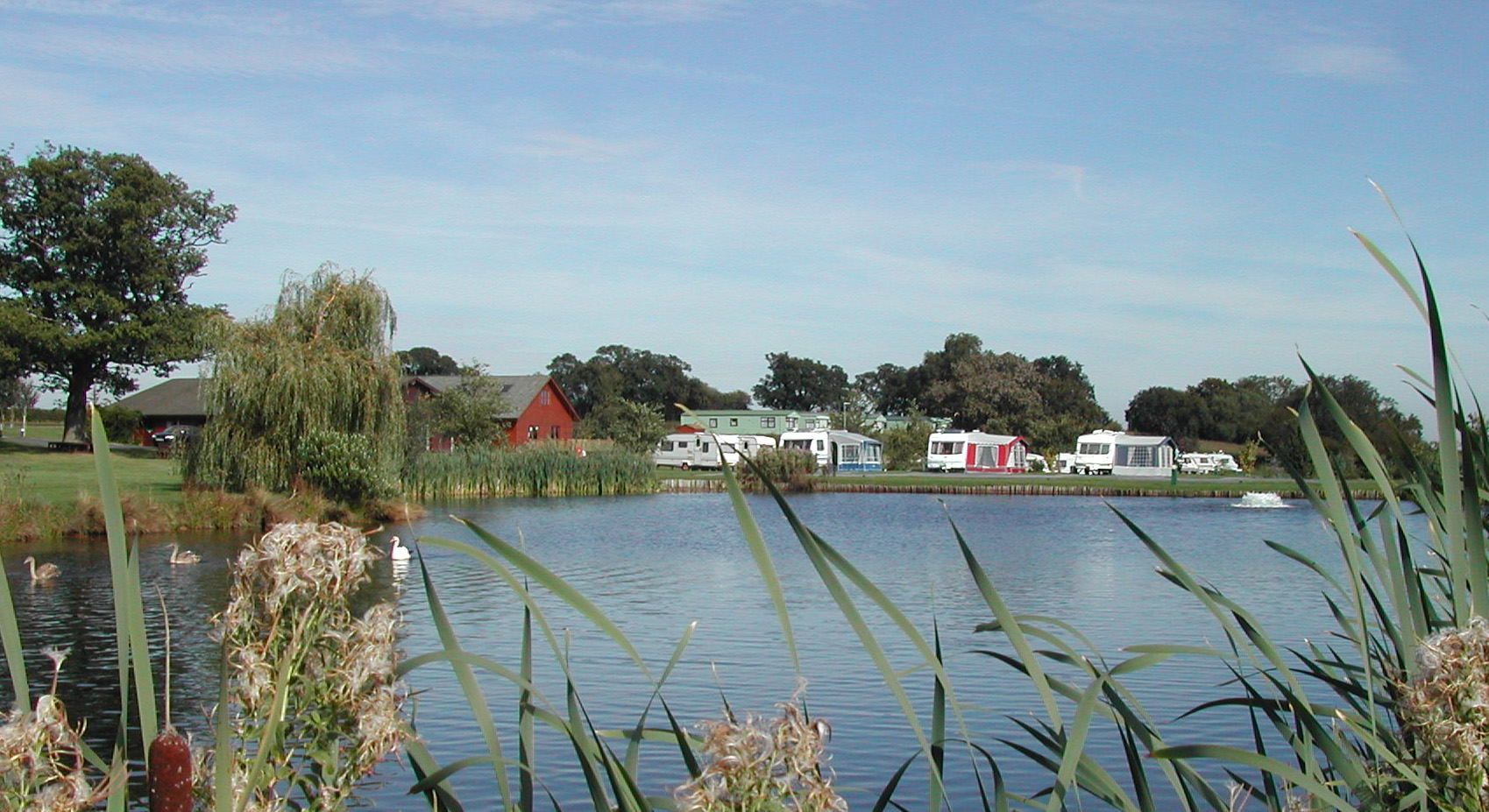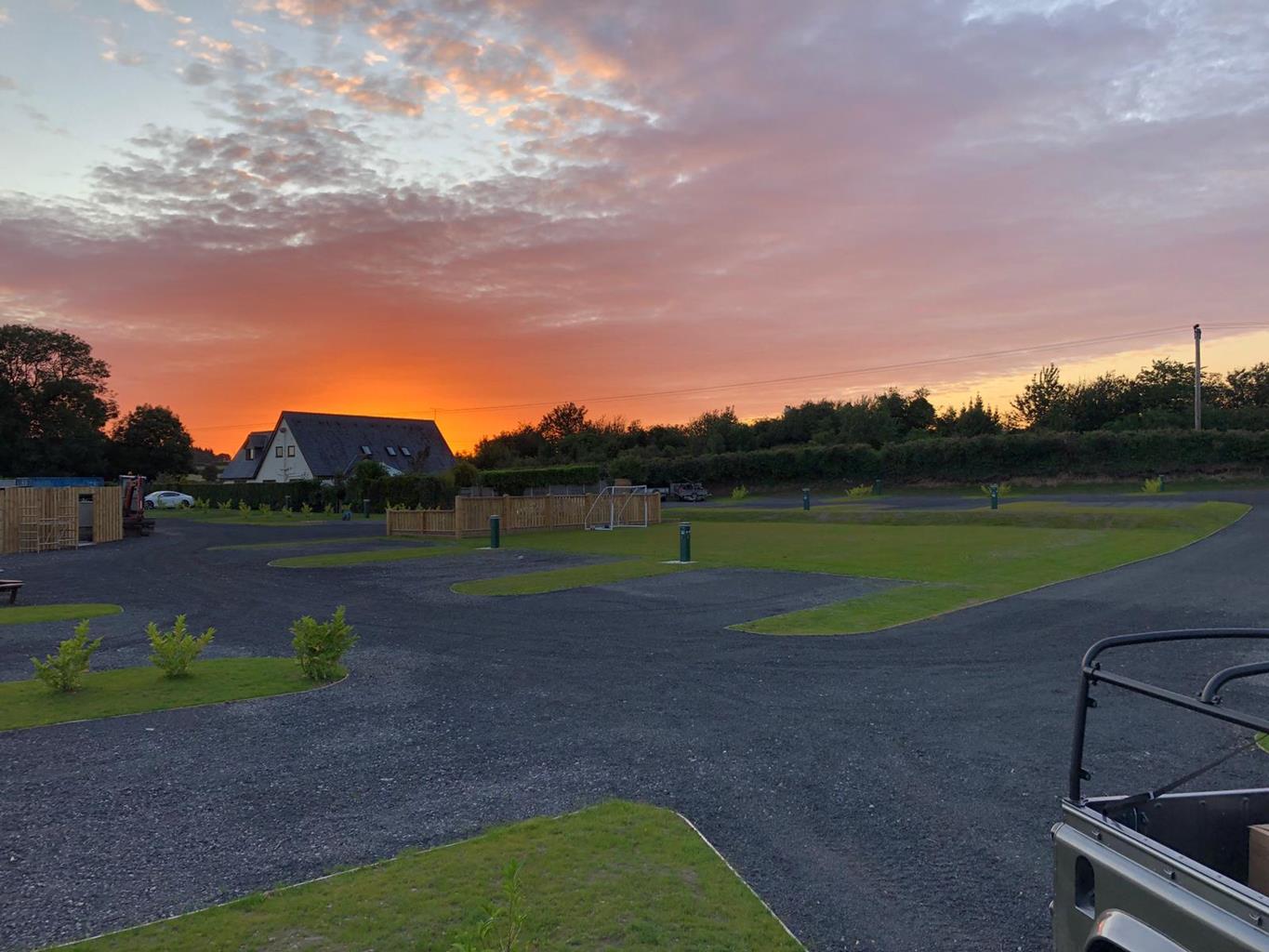Griffin Inn is at the heart of the of village of Llanbedr Dyffryn Clwyd, near Offa’s Dyke Path…
Along Offa's Dyke: Moel Famau and Foel Fenlli

Along the Offa's Dyke ridge between Moel Famau and Foel Fenlli
6.75 miles (10.9kms)
About the walk
The Clwydian Range is a chain of hills in northeast Wales stretching from Llandegla in the south to Prestatyn on the North Wales coast. Almost the entire upland area has been designated an Area of Outstanding Natural Beauty (AONB) – one of only five areas in Wales to be granted this level of protection. The boundaries of the AONB have recently been extended south to include the Dee Valley around Llangollen, and there have even been calls to include the whole area in a new national park. The highest of the 21 or so distinct peaks that make up the range is Moel Famau. At 1,818ft (554m), the mountain is not particularly high, but views from the top are impressive, extending across North Wales from Snowdonia in the west to Chester and Liverpool in the east. South of the summit, Offa’s Dyke Path follows a wide track along an undulating ridge. This is pleasant walking, with fine views across the Vale of Clwyd. Beyond the road pass at Bwlch Pen Barras, the path climbs steeply to Foel Fenlli, second only to Moel Famau among the Clwydian summits.
Hill fort
Foel Fenlli is the most southerly of a chain of Iron Age hill-forts along the line of the Clwydian Range. The defensive earthworks on the hilltop enclose an area of some 25 acres (10ha) and are at their highest to the north and east, suggesting that the fort was built to guard the obvious pass into the Vale of Clwyd through Bwlch Pen Barras. The fort dates back to the Iron Age, but appears to have been reoccupied during the troubled period following the Roman withdrawal from Britain in the 5th century. Around the middle of the century, it was supposedly the stronghold of the ‘iniquitous and tyrannical’ King Benlli, from whom the mountain derives its name. There are the remains of around two dozen hut platforms in the southwest quarter of the fort, while the summit is marked by a cairn of possible Bronze Age origin.
Walk directions
Locate an information board near the car park entrance. Follow the dark blue/purple waymarkers up the hill to the right of a stream. Fork left to continue along a gravel track, then keep straight ahead at a crossroads of tracks by a large black grouse sculpture. Keep straight ahead up the hill to the top edge of the forest.
After emerging from the trees, take the waymarked ‘blue trail’ signed to the left. This follows a winding route up the hill, avoiding sections of steep loose scree on the main track. A final right turn onto a wide gravel path leads up to the tower on the top of Moel Famau.
From the summit, retrace your steps down the wide gravel path (‘Offa’s Dyke Path’). At the turn-off to the ‘blue trail’, continue ahead along an undulating ridge. The wide track eventually descends to a high roadside car park at Bwlch Pen Barras, where there is a handy refreshment hut (open weekends and daily in the summer).
Cross the road to continue along Offa’s Dyke Path (now a grassy trail), which passes around the right-hand side of Foel Fenlli, the next hill ahead. After climbing onto the hill’s high western shoulder, follow the outer ring of an Iron Age fortification round to the far side of the hill.
Climb some new steps to where a level grassy path crosses your route. Keep ahead up more steps to visit the hill’s summit, otherwise turn right, following an Offa’s Dyke waymark. At the next fork in the path, bear right and descend steeply to a small plantation. Climb the right edge of the plantation to a field.
Cross the field to a fence and bear left. The waymarked path continues alongside the fence, then traces the edge of another plantation. About 200yds (183m) after the end of the trees, you will come to a gate and a crossroads of paths to the south of Fron-heulog farm (visible on the pastured hillside to the left).
Turn left through the gate and follow the grass track to the top gate just to the left of the farm. Beyond this, swing right on a track that skirts above the farm and soon offers superb views across the Alun Valley.
The track follows a fence and wall on the right, arcing round the hillside of Fron Hen and eventually emerging on a country lane by a house (Tyn-y-Groesffordd). Turn left along the lane and continue to a T-junction. Cross to a path in the hedgerow opposite and turn left. Follow a safe, parallel route to the road back to the car park.
Additional information
Well-defined paths and forestry tracks
Heather moor, forest and farmland
Dogs can run free in the forest and on heather ridges
OS Explorer 265 Clwydian Range
Natural Resources Wales pay car park at Coed Moel Famau
In car park
WALKING IN SAFETY
Read our tips to look after yourself and the environment when following this walk.
Find out more
Also in the area
About the area
Discover Denbighshire
The north-east Wales county of Denbighshire shares a name – though not the same borders – with one of Wales’s thirteen historic counties. It includes the seaside holiday towns of Rhyl and Prestatyn; the medieval county town of Denbigh; and the tiny cathedral town of St Asaph.
Pretty Llangollen in the south of the county is part of the 11-mile UNESCO World Heritage Site beginning at the Horseshoe Falls, in Denbighshire’s Dee Valley Area of Outstanding Natural Beauty (AONB), and following the Llangollen Canal along its length to Thomas Telford’s cast iron Pontcysyllte Aqueduct just over the border in neighbouring Wrexham.
Today, the county is predominantly rural, with sheep and cattle rearing in the upland areas. Much of the economy is based around tourism, with plenty of holiday cottages and B&Bs available around the seaside towns, while attractions further inland include plenty of castles – try Rhuddlan, Denbigh, Dinas Bran or Bodelwyddan – the Llangollen–Corwen heritage railway and the Victorian Ruthin Gaol.
Nearby stays
Restaurants and Pubs
Nearby experiences
Recommended things to do
Why choose Rated Trips?
Your trusted guide to rated places across the UK
The best coverage
Discover more than 15,000 professionally rated places to stay, eat and visit from across the UK and Ireland.
Quality assured
Choose a place to stay safe in the knowledge that it has been expertly assessed by trained assessors.
Plan your next trip
Search by location or the type of place you're visiting to find your next ideal holiday experience.
Travel inspiration
Read our articles, city guides and recommended things to do for inspiration. We're here to help you explore the UK.

